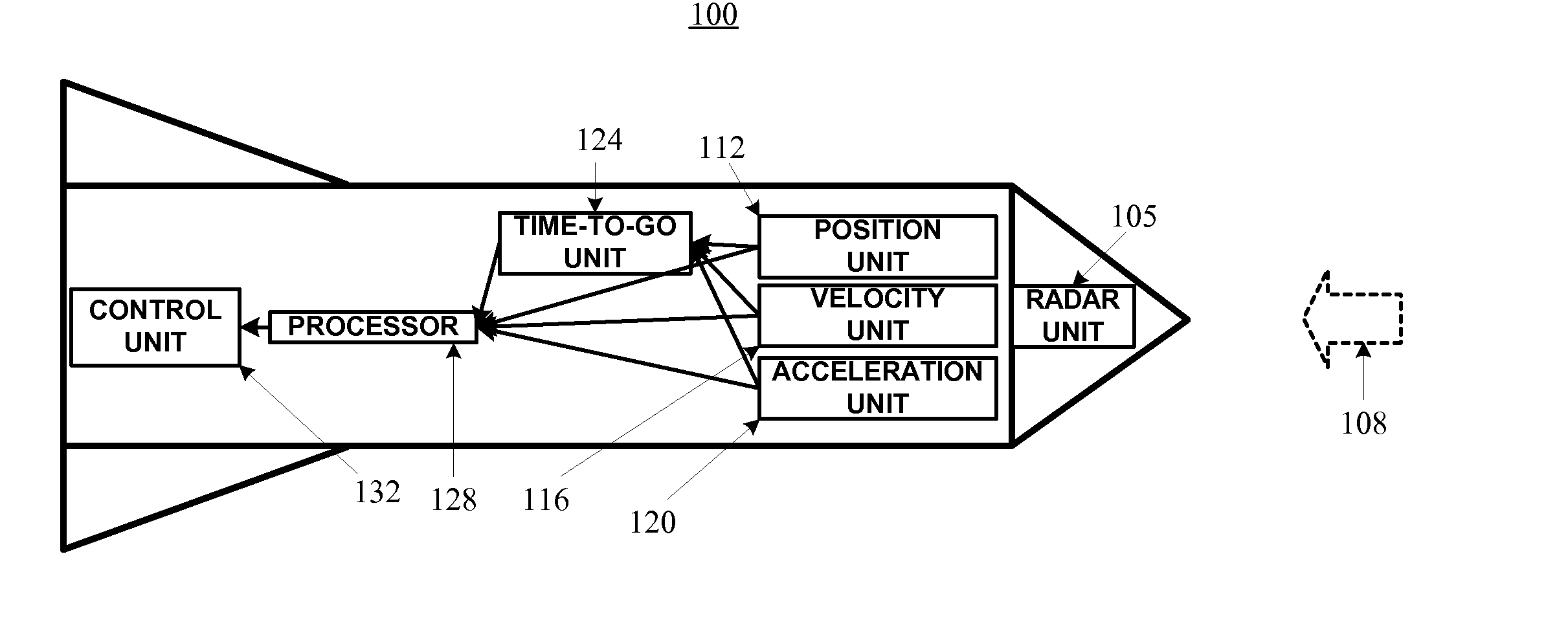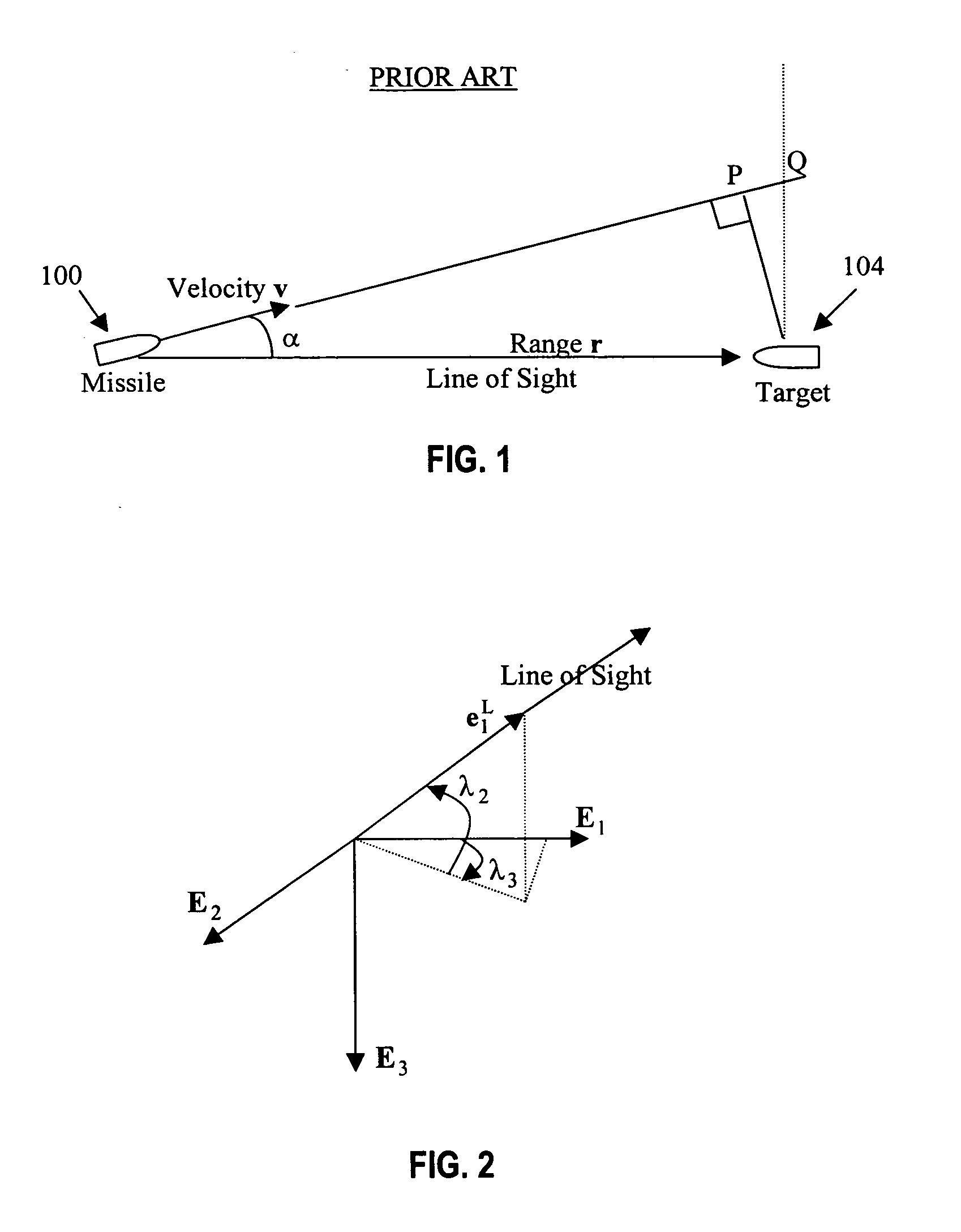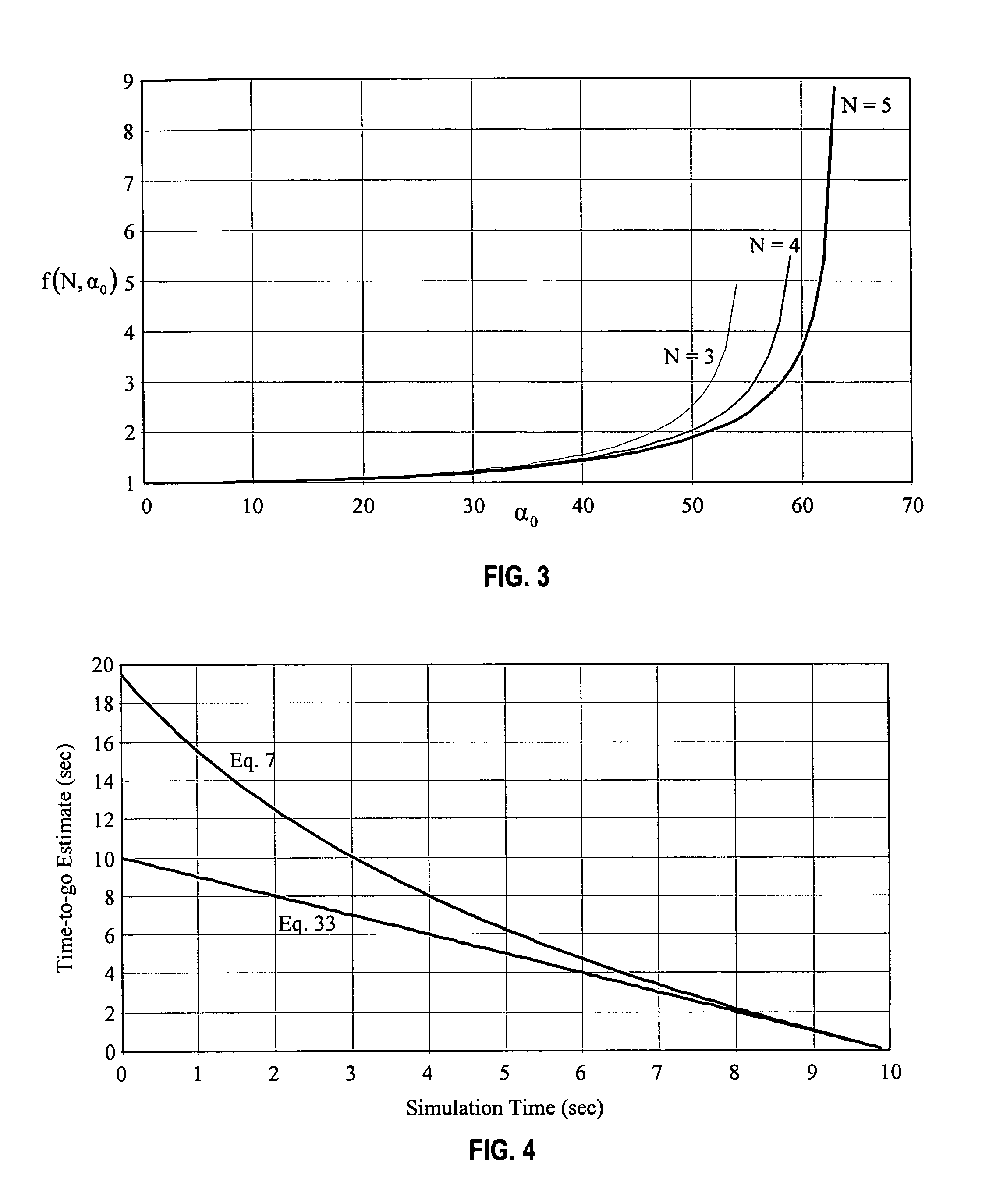Time-to-go missile guidance method and system
a missile guidance and time-to-go technology, applied in the direction of ammunition fuzes, using reradiation, instruments, etc., can solve the problems of difficult dramatic changes, and achieve the effect of high accuracy, not computationally time-consuming, and high accuracy
- Summary
- Abstract
- Description
- Claims
- Application Information
AI Technical Summary
Benefits of technology
Problems solved by technology
Method used
Image
Examples
first embodiment
[0030] Deriving a more accurate time-to-go estimate that accounts for the actual or real time acceleration in the first embodiment begins by modifying the zero-effort-miss distance to include acceleration: z=r+vt+12at2,Eq. 10
where a is the missile-to-target acceleration. As with the velocity v, the missile-to-target acceleration a is a net acceleration and is a function of both the missile and target accelerations. Substituting Eq. 10 into Eq. 2 yields: 12a·at3+32a·vt2+(a·r+v·v)t+v·r=0.Eq. 11
[0031] The following equations (Eqs. 12-14) simplify the remainder of the analysis.
v·r=vr cos α Eq. 12
a·r=ar cos βEq. 13
a·v=av cos γ Eq. 14
When a≠0, the following additional equations (Eqs. 15, 16) further simplify the analysis. v_=vaEq. 15r_=raEq. 16
[0032] Substituting Eqs. 12-16 into Eq. 11 yields:
t3+3 v cos γt2+2( r cos β+ v2)t+2 v r cos α=0. Eq. 17
Defining τ as the time-to-go solution, Eq. 17 becomes:
(t−τ)(t2+bt+c)=0. Eq. 18
[0033] Eq. 18 has only one real solution, ...
second embodiment
[0041] In the second embodiment, equations based upon three-dimensional relative motion will be developed leading to an analytical solution for true proportional navigation (TPN). The analytical solution to the TPN is then used to derive the time-to-go estimate that accounts for TPN acceleration.
[0042] Let [E1, E2, E3] be the basis vectors of the fixed reference frame. Two additional reference frames will also be employed: the LOS frame and the angular momentum frame. Let [e1L, e2L, e3L] be the basis vectors of the LOS frame, with unit vector e1L aligned with the LOS. Let [e1h, e2h, e3h] be the basis vectors of the angular momentum frame, with unit vector e3h aligned with the angular momentum vector. As will be shown below, the unit vector e1h is aligned with unit vector e1L. Further, the missile-to-target acceleration components expressed in the angular momentum frame can be solved analytically.
[0043] Let λ2 and λ3 be the LOS elevation and azimuth angles, respectively, with respe...
numerical examples
[0081] The results of several numerical examples for time-to-go calculations will now be discussed. In the first example, r=(5000, 5000, 5000), v=(−300, −250, 200), and a=(−40, −50, −60). The results are shown in FIG. 4. It is clear that Eq. 33 yields the exact solution while Eq. 7 returns a large error initially, though the time-to-go error is reduced as the simulation time draws closer to intercept. If a missile, which carries a warhead that must detonate when the missile is close to the target, used Eq. 7 to arm itself, the warhead would uselessly explode far beyond the target as Eq. 7's time-to-go is almost twice the actual time-to-go.
[0082] The second numerical example is a TPN simulation, with a proportional navigation gain N=3. The initial missile and target conditions are:
MissileTargetInitial Position(0, 0, 0)(1000, 1000, 500)Initial Velocity(100, 0, 0)(−10, −5, −5)Initial Acceleration(0, 0, 0)(0, 0, 0)
[0083] The results for several time-to-go approximations are plotted i...
PUM
 Login to View More
Login to View More Abstract
Description
Claims
Application Information
 Login to View More
Login to View More - R&D
- Intellectual Property
- Life Sciences
- Materials
- Tech Scout
- Unparalleled Data Quality
- Higher Quality Content
- 60% Fewer Hallucinations
Browse by: Latest US Patents, China's latest patents, Technical Efficacy Thesaurus, Application Domain, Technology Topic, Popular Technical Reports.
© 2025 PatSnap. All rights reserved.Legal|Privacy policy|Modern Slavery Act Transparency Statement|Sitemap|About US| Contact US: help@patsnap.com



